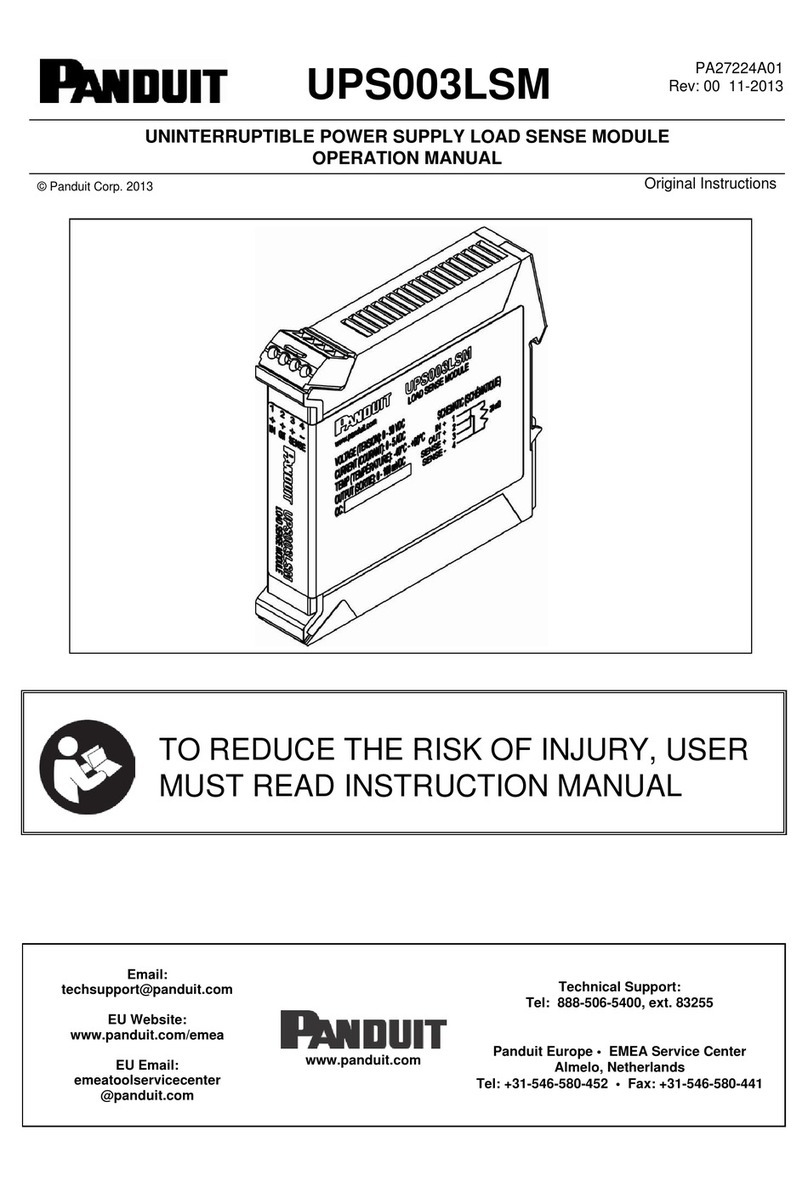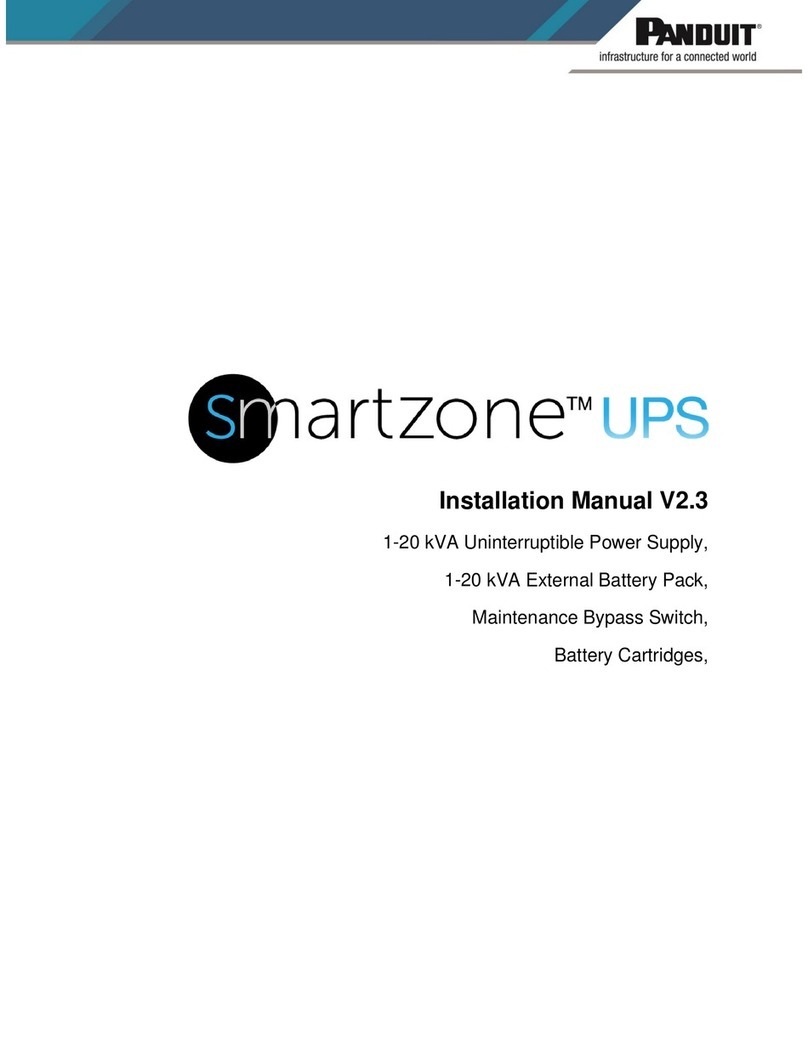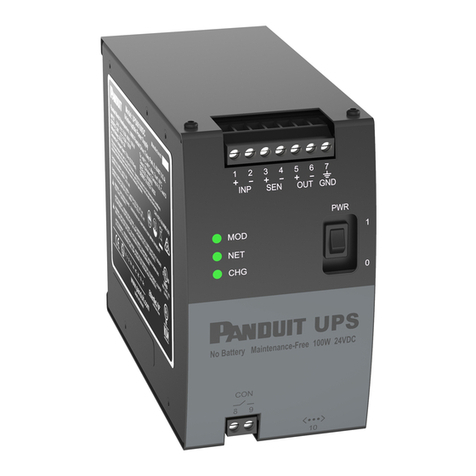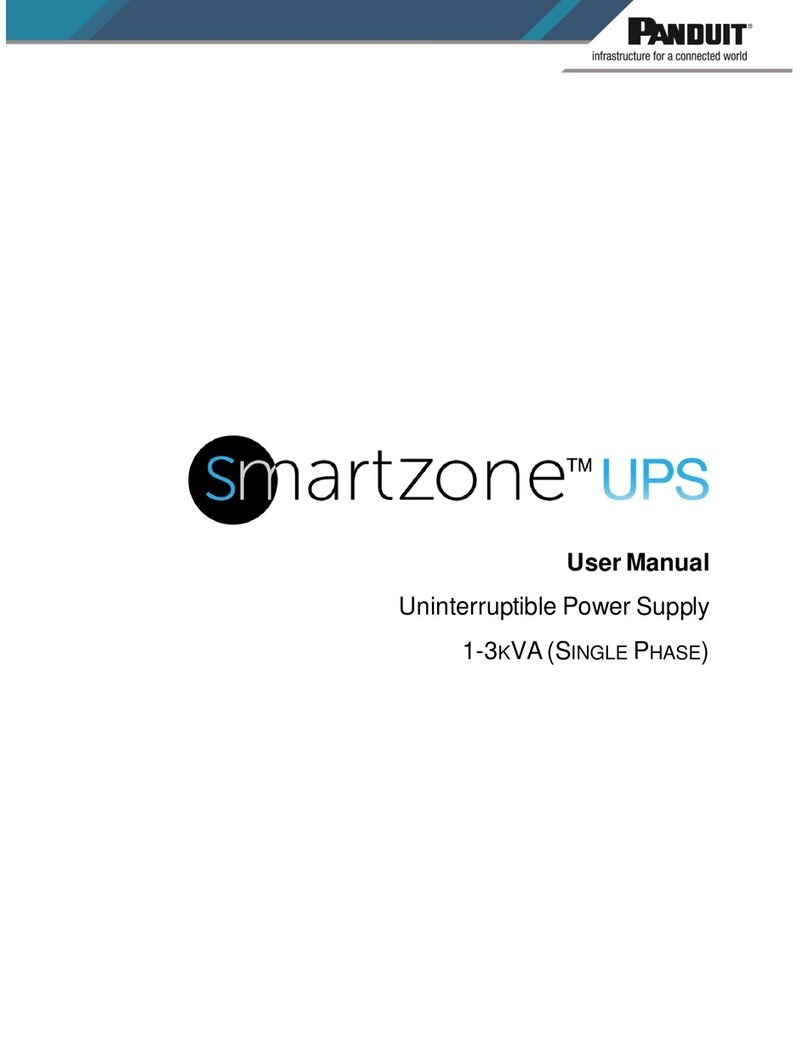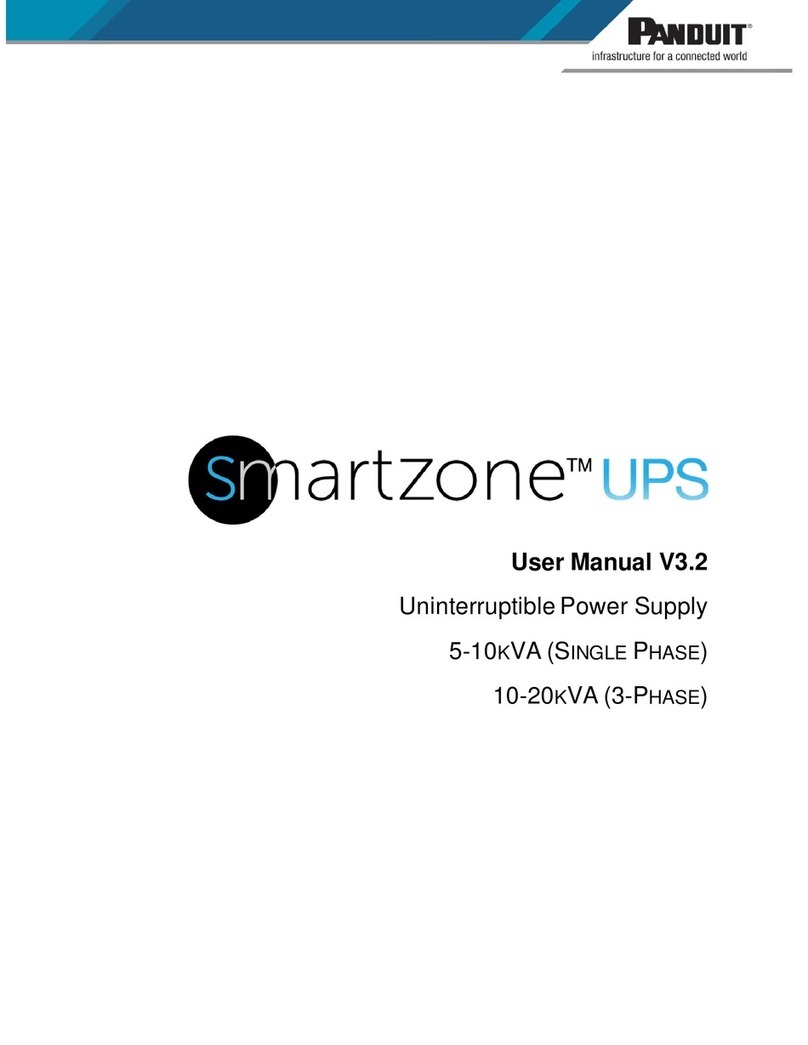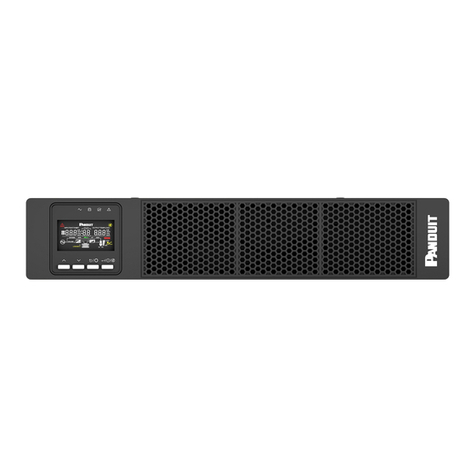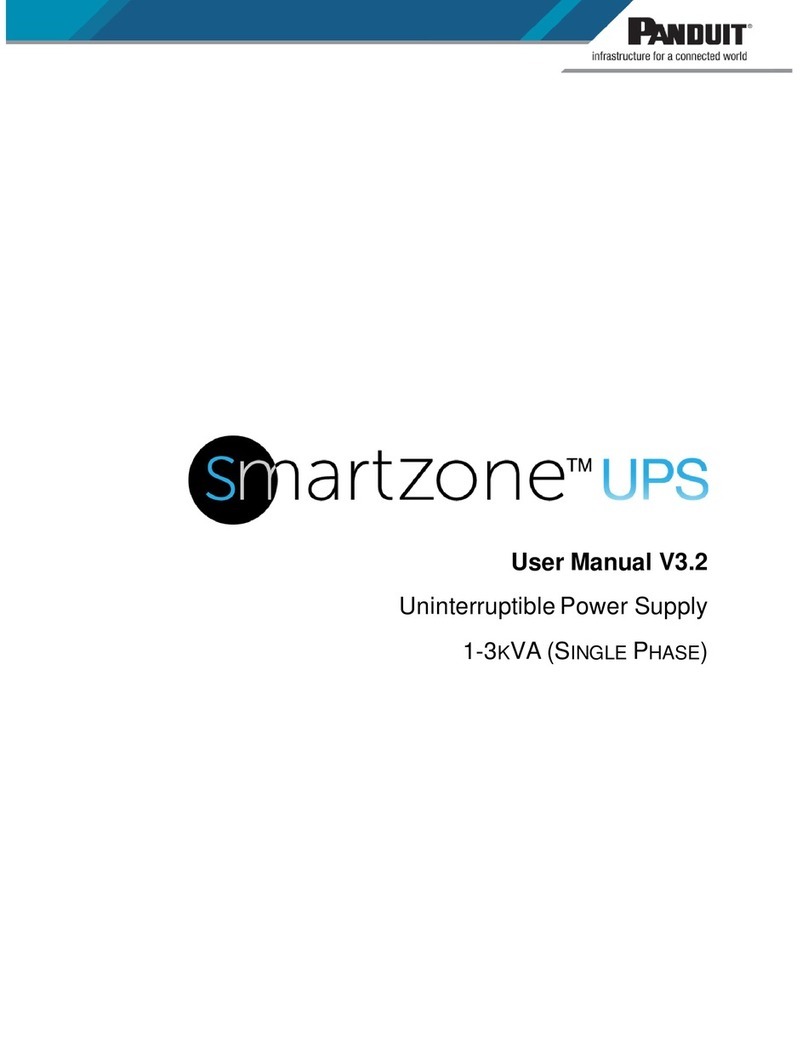©Panduit Corp. 2014OPERATION MANUAL UPS003024024015
Page: 2 of 29
3. OPERATION ................................................................................................................14
LOAD SUPPORT ............................................................................................................. 143.1.
INSTALLATION................................................................................................................ 143.2.
GENERAL OPERATION.................................................................................................. 173.3.
STATUS VIA PC............................................................................................................... 183.4.
STATUS VIA PLC ............................................................................................................ 183.5.
4. WEB BROWSER INTERFACE (WBI)..........................................................................19
REQUIREMENTS............................................................................................................. 194.1.
CONNECTING TO THE UPS........................................................................................... 194.2.
USERNAME AND PASSWORD ...................................................................................... 194.3.
MODULE .......................................................................................................................... 204.4.
EVENT LOG ..................................................................................................................... 214.5.
NETWORK ....................................................................................................................... 224.6.
CHARGE .......................................................................................................................... 244.7.
SETTINGS........................................................................................................................ 264.8.
Table of Figures
Figure 1: UPS.................................................................................................................................... 8
Figure 2: UPS Front Panel ................................................................................................................ 9
Figure 3: Reset Button Location...................................................................................................... 13
Figure 4: DIN Rail Installation.......................................................................................................... 15
Figure 5: System Block Diagram..................................................................................................... 16
Figure 6: Load Sense Module ......................................................................................................... 17
List of Tables
Table 1: Module Status Indicator..................................................................................................... 11
Table 2: Network Status Indicator ................................................................................................... 12
Table 3: Estimated Capacitor Lifetime ............................................................................................ 14
ENGLISH
NOTE: In the interest of higher quality and value, Panduit products are
continually being improved and updated.
Consequently, pictures may vary from the enclosed product.
